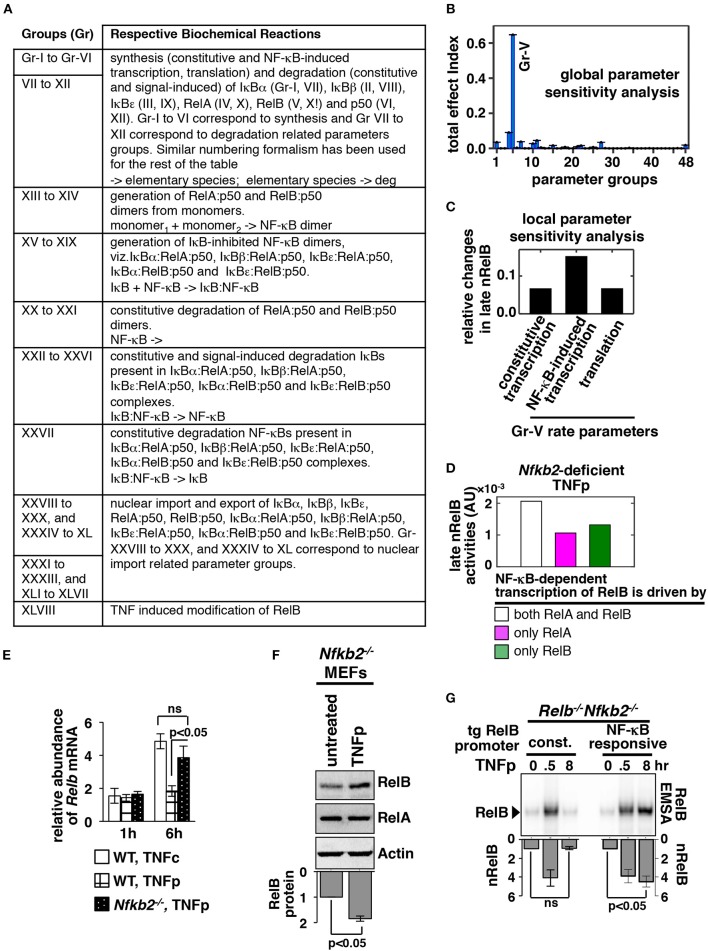Figure 3.
NF-κB-dependent RelB synthesis promotes the late RelB:p50 activity induced upon brief TNF treatment of Nfkb2−/− cells. (A) Parameter groups analyzed in the variance-based, multiparametric sensitivity analysis. (B) Variance-based multiparametric analysis revealing the total effect index, which represent the effect of the parameter uncertainty on the late (6–8 h) RelB:p50 activity induced by TNFp in the Nfkb2-deficient system for the individual parameter groups. Standard bootstrapping was used for estimating error ranges. Gr, group. Gr-V consists of parameters related to RelB synthesis; including constitutive and NF-κB induced transcriptions as well as translation. (C) Local sensitivity analysis revealing the effect of 10% increase in the indicated parameters belonging to Gr-V on the late RelB:p50 response to TNFp in the Nfkb2-deficient system. Differences in the basal-corrected, RelB:p50 activity between the unperturbed system and perturbed systems were scored. (D) Computational simulations of the late nRelB response to TNFp involving Nfkb2-deficient systems, where the expression of RelB mRNA is mediated by either RelA as well as RelB heterodimers or by RelA alone or by exclusively RelB. (E) WT and Nfkb2−/− MEFs were treated with TNFp before being subjected to qRT-PCR analysis of Relb mRNA abundances normalized to that of Actb mRNA. WT MEFs treated with TNFc were used as control. Bargraphs demonstrate the abundances of mRNAs in TNF-treated cells relative to those measured in the untreated cells. Data represent four biological replicates. (F) Nfkb2−/− MEFs were treated with TNFp and harvested at 6 h post-stimulation before being analyzed by Western blotting. Actin served as a loading control. Bottom: densitometric analysis of the relative abundance of RelB protein in whole cell extracts; data represent five biological replicates. (G) TNFp-induced nRelB activity in Relb−/−Nfkb2−/− MEFs stably expressing RelB from a retroviral transgene (tg) either constitutively (const.) or from an NF-κB responsive promoter. Ablating RelA DNA binding with an anti-RelA antibody, residual nRelB activities were revealed by RelB-EMSA. Data represent four independent experiments. Quantified data presented in this figure are means ± SEM.

